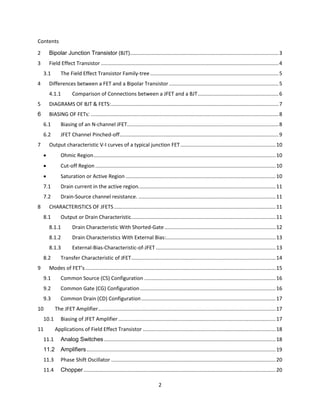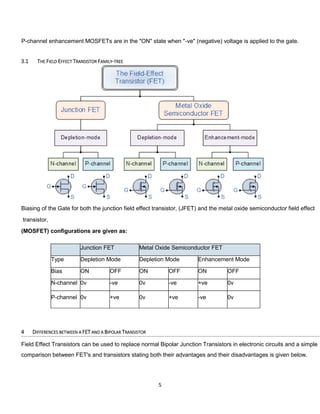This document is an in-depth analysis of bipolar junction transistors (BJTs) and field effect transistors (FETs), focusing on their types, transfer and drain characteristics, and applications. It compares BJTs and FETs, highlighting their operational principles, configurations, and biases to illuminate their advantages and disadvantages. The content is structured with detailed diagrams and equations that illustrate the functioning of these electronic components.





















